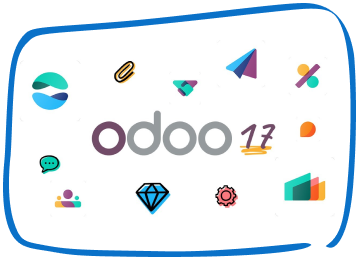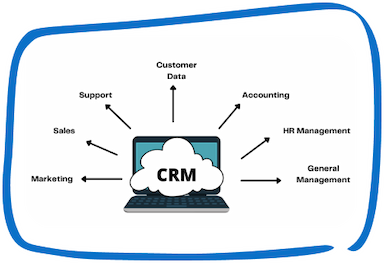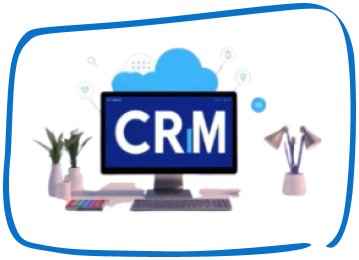Procurement Process Integration into an ERP
The procurement process represents a pivotal aspect of businesses, covering the acquisition of supplies or services essential for operations. It involves various stages from sourcing to purchasing. When this process seamlessly integrates into an Enterprise Resource Planning or ERP software solution, it gains significant potency in managing and overseeing the entire purchasing workflow. This integration facilitates tasks like budget management, expenditure tracking, and more within a centralized system.
An ERP system, when equipped with a dedicated procurement module, empowers businesses to meticulously handle purchase orders. It enables the breakdown of orders into specific lines denoting individual items. Consequently, purchasing managers and departments can effortlessly generate purchase orders, access a comprehensive supplier database, and consolidate orders to bolster negotiation capabilities.
How ERP Enhances Efficiency in Purchasing
Procurement involves intricate planning, meticulous management, and stringent control to align various components and associated data for seamless operations. Utilizing ERP software automates this process, leading to faster time-to-market, thereby conserving crucial resources, time, and costs along the operational journey.
In industries such as manufacturing (e.g., automotive supply chain), food and beverage distribution, retail, consumer goods, oil & gas, telecom, and more, an automated procurement module integrated into an ERP system holds immense value. It ensures optimal inventory levels, whether it’s raw materials for manufacturing or finished products. Additionally, it enables logistics and distribution companies to meet delivery deadlines while adhering to budget constraints.
Standard ERP Buying Workflow
Compared to other workflows, the buying process appears relatively straightforward. However, delving into key terms associated with this workflow is crucial for a comprehensive understanding. Exploring these terms will complement and expand upon the definitions we’ve previously covered. Notably, certain terms within the flowchart pertain to Inventory and Accounts management, which we’ll explore in subsequent discussions.
Key Terms in the ERP Buying Workflow
Item:
In the context of the ERP buying workflow, an item denotes any product, material, or service procured by your company.
Material Request (Purchase):
This refers to a specific material or item requested for purchase. Once approved by a purchase manager, it initiates the process for requesting a quotation.
Supplier:
Suppliers encompass companies or individuals supplying products or services to your business. Within an ERP system, categorizing suppliers aids in establishing a centralized buying system.
Advanced Supplier Management in ERP Software
Some ERP systems offer additional features like supplier scorecards. These tools evaluate supplier performance. They allow businesses to monitor and track aspects such as item quality, delivery reliability, and responsiveness over an extended period. Supplier scorecards contribute to maintaining efficient and reliable supply chains within the ERP framework.
Request for Quotation (RFQ)
A Request for Quotation (RFQ), often abbreviated as an ‘RFQ,’ constitutes a document forwarded by an organization to one or more suppliers. Its primary purpose is to solicit quotations for specific items or services. These items are typically recorded within the ERP software, enabling seamless tracking against existing stocks and inventory. RFQs are usually generated concerning approved Material Requests.
Supplier Quotation
A Supplier Quotation stands as a comprehensive document outlining the details, terms, and costs associated with the goods or services a supplier intends to furnish within a defined timeframe. In ERP software, suppliers with authorized access can peruse relevant RFQs and submit their responses within the system by creating a draft supplier quotation.
Purchase Order
Upon reaching an agreement, a Purchase Order (PO) is established, serving as a contractual agreement between your business and the supplier. This document delineates the mutually agreed-upon terms and conditions for the purchase within a specified period. Once this stage is completed, subsequent logistical procedures are managed through the integrated inventory and accounting modules of the ERP system.
Utilizing ERP Functionality for Tax Application
Your selected ERP software might offer Purchase Taxes and charges Templates. These templates enable users to create predefined formats to apply specific tax conditions to any purchased items. This feature streamlines the tax application process. As a result, it complies with tax regulations and simplifies the procurement workflow within the ERP environment.
Analyzing Buying Patterns: Reports for Purchase Management
Purchase Order Trends Report
This report facilitates the visualization of purchase order trends within a specific financial year. It offers the ability to group trends based on various parameters such as Suppliers, Supplier Groups, Items, Item Groups, and Projects. By categorizing and presenting this data, businesses gain insights into their purchasing patterns.
Purchase Analysis Report
The Purchase Analytics report digs into purchase-related data concerning suppliers, supplier groups, items, and item groups over defined periods and frequencies. This analysis aids in understanding and optimizing procurement strategies based on historical purchasing information.
Purchase Order Analysis Report
Useful for analyzing items and their billing statuses within purchase orders across specified periods. Also, this report offers valuable insights into the status of items within purchase orders, leading to better management and decision-making.
Setting Up a Comprehensive Purchase Management Workflow
Supplier Management Integration
Commencing with the addition of a comprehensive list of Suppliers into the ERP software. This step facilitates direct interaction between businesses and Suppliers through the ERP interface. Simultaneously, the system maintains and regularly updates Supplier Scorecards, ensuring a transparent evaluation of supplier performance.
Material Request Approval Process
All Material Requests for Purchase undergo an approval process. Whether the purchase involves raw materials for production or other necessities, these requests must undergo evaluation and receive approval before any transactions are initiated.
RFQ Initiation and Evaluation
Upon approval of Material Requests, relevant RFQs are dispatched to Suppliers. These documents outline Spindl’s current requirements. Ideally, RFQs are aligned with approved Material Requests, ensuring a streamlined procurement process.
Supplier Quotation Assessment
After Suppliers respond to RFQs, evaluating and comparing their quotations identify the most advantageous proposal based on criteria like quality, cost, and timelines.
Purchase Order Creation
Selection of the optimal Supplier Quotation culminates in the creation of a Purchase Order. This document solidifies the contractual agreement between Spindl and the Supplier, initiating the procurement process with defined terms and conditions.
Leveraging the Advantages of an ERP’s Buying Module
Automating the Purchase Process
The ERP’s purchase module serves as an automated solution that streamlines an organization’s entire procurement process. This automation significantly enhances operational efficiency and effectiveness.
Benefits of the ERP Purchase Module
1. Reduction of Paperwork and Manual Operations
Implementing the ERP purchase module minimizes reliance on manual operations and paperwork. Digitalizing processes reduces human error and accelerates transactional workflows.
2. Inventory Optimization
Efficiently managing inventory levels is a notable benefit. Real-time insights into inventory status facilitate inventory reduction, thereby lowering overall inventory costs for the organization.
3. Prevention of Production Delays
Tracking available inventory in real time prevents production delays. This feature ensures that necessary materials are always in stock, mitigating disruptions in production schedules.
4. Vendor Performance Evaluation
The ERP purchase module aids in assessing the performance of existing vendors while identifying potential new vendors. This evaluation capability is essential for maintaining high-quality vendor relationships and sourcing the best suppliers.
5. Data Maintenance and Updates
Integral to the module’s functionality is its ability to consistently maintain and update purchasing-related data. This ensures the accuracy and reliability of information associated with procurement activities.
6. Streamlined Invoicing and Receipt Generation
Another advantageous feature is the module’s capacity to generate invoices and receipts seamlessly. This capability streamlines the financial aspect of procurement, facilitating efficient transaction processing.
The bottom line
The ERP’s purchase module goes beyond automating processes. It significantly enhances organizational efficiency by reducing manual efforts and optimizing inventory and production continuity. It further facilitates vendor management, maintaining accurate data, and simplifying financial transactions.
You can’t afford to ignore procurement in ERP if you’re searching for ways to automate the process, lower error rates, and free up team members’ time so they can concentrate more on strategy.
ERP procurement modules are essential for both front and back-office operations.
To speak with a consultant or to view our range of digital solutions in action, get in touch with us for reliable procurement solutions by ERPNext.
Speak with Our Team!
4.9 Stars
1k+ reviews on






